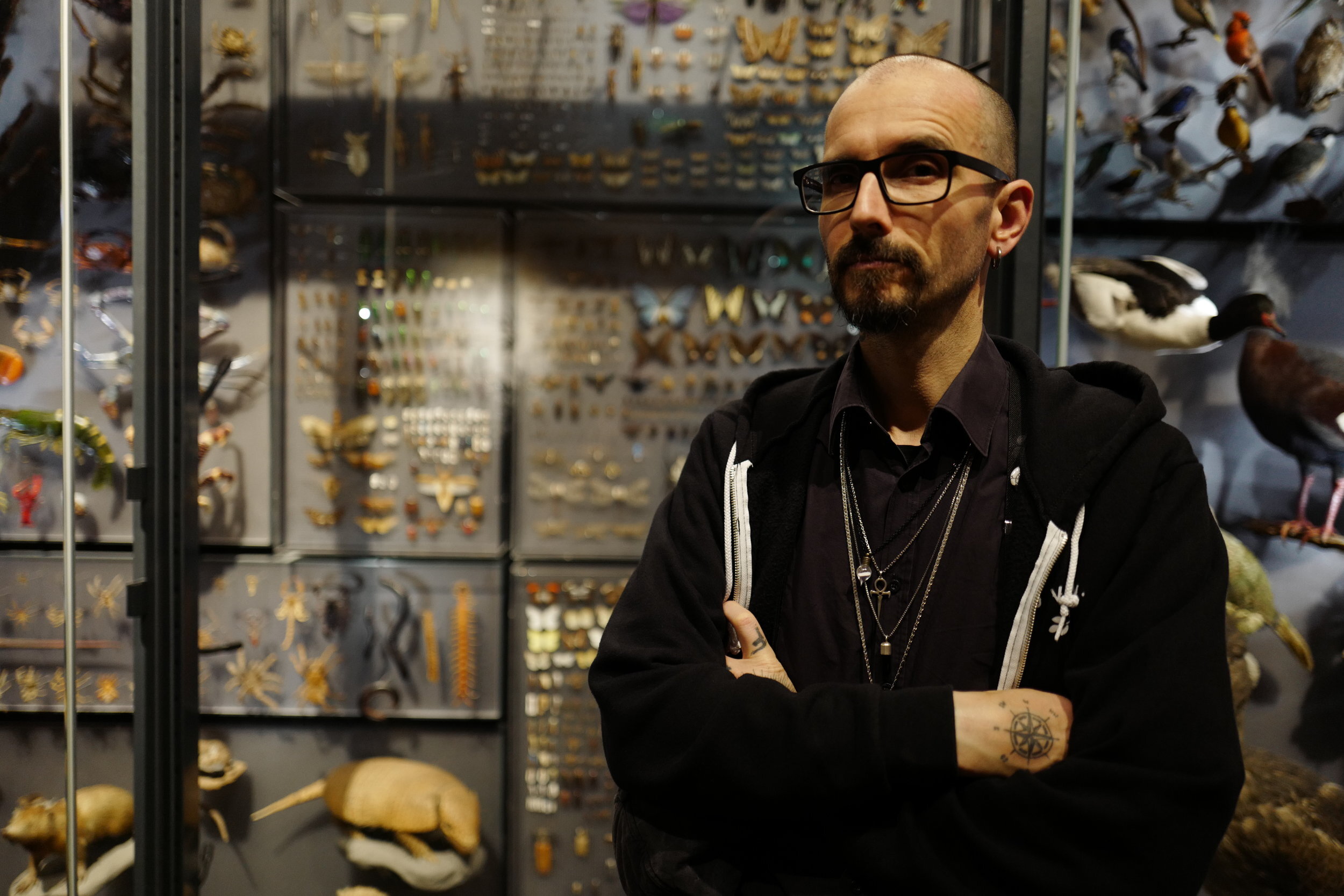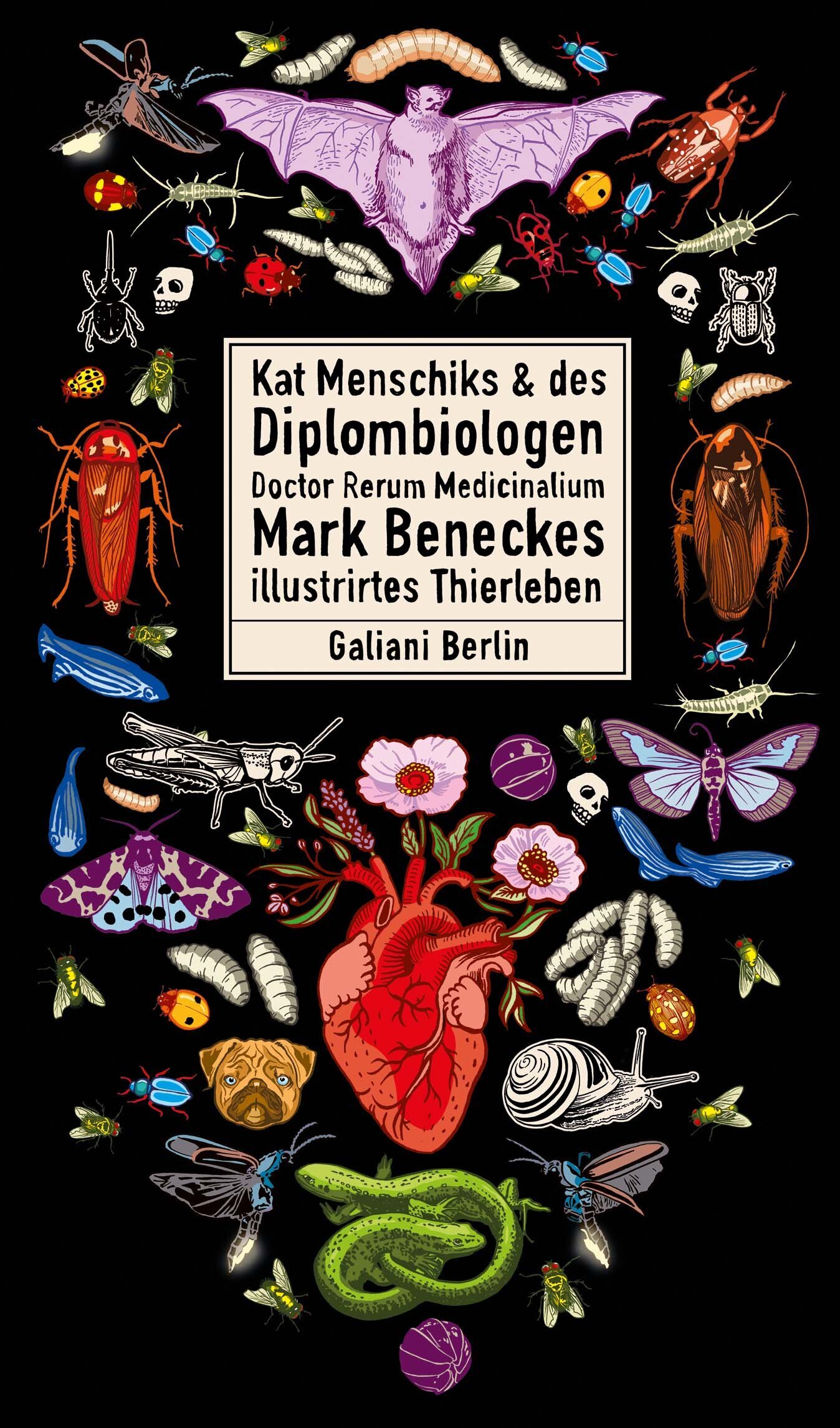Source: The Nature of Things. Stories from a Natural History Museum. Edited by Anita Hermannstädter, Ina Heumann and Kerstin Pannhorst. Reimer Verlag / Museum für Naturkunde Berlin, ISBN 978-3-496-01651-9; German version was called ‘Wissensdinge’ (2015) under ISBN 978-3-496-01650-2. Funding by German Federal Ministry of Education and Research (Bundesministerium für Bildung und Forschung / BMBF).
Dept. ‘Before 1927’
Wherever I go, Bibio marci seems to follow me. I used to work at the University of Cologne, and across the street from the Zoology Institute was an old cemetery where I liked to go for walks. I would find strange creatures flying there in the spring, really weird insects with eyes that looked like they were covered in fur. They were very elegant, all in black – a colour I always wear, too. I grew quite fond of them on these quiet walks and determined to find out their name. They’re called St Mark’s flies, which taxonomically speaking is not entirely correct – technically, they’re a suborder of flies called Nematocera. But my name’s Mark, too, and so that was another thing we had in common. These little animals – whom I now call by their scientific name, Bibio marci – have been a part of my life ever since.
A few years ago, in my capacity as a forensic biologist. I was called in to consult on an interesting murder case. Six years had passed since the murderer had been found guilty but when we examined the crime scene for evidence he had left behind, we managed to find quite a lot. Just outside the room where the murder had taken place was a large old garden. There, sitting next to me, I suddenly discovered my old friend Bibio marci. This was an unexpected pleasure because the places I normally find myself – from big cities to the jungle – are not typical habitats for this species.
When I decided to become the sponsor of an insect drawer at the Museum für Naturkunde in Berlin (which, incidentally, is one of the loveliest museums in the world, and I’ve been to a lot of museums), I naturally picked out a drawer with St Mark’s flies. I find it genuinely scary and sad and strange that some people think insects are gross. Flies are wonderful – they have a really cool transformerlike exoskeleton and they’re not slimy (which some people feel is disgusting) or otherwise off-putting. They’re absolutely fabulous creatures and they’re perfectly adapted to their environment.
I’ve been fascinated by insects ever since I first started working as a forensic scientist and had an old cellar office. The cellar was next to the autopsy room, and you would find insects on decaying bodies – mostly flies and beetles, and sometimes stranger species like hoverflies or certain insects that people think of as pests but that also feed on corpses, like ham beetles or carpet beetles. The coolest of all the insects is Bibio marci, though: they’re always in the right place at the right time and, for me, they always bring good luck.
Mark Benecke, interview by Kerstin Pannhorst
INSECT DRAWER CONTAINING ST MARK’S FLIES
Bibio marci, collected in Germany, Poland and Spain between 1820 and 1927. Diptera Collection:
Drawer No. 6243
Mark Benecke is a forensic biologist and has been working internationally in the field of forensic science for over 25 years. After earning his doctorate at the Institute for Forensic Medicine of University of Cologne, he continued his forensic training by completing a variety of specialist courses in the United States, including coursework at the FBI Academy. In addition to numerous scientific articles, he has written books in the fields of biology and forensics as well as children’s books. He is especially interested in the discipline of forensic entomology. Benecke is the sponsor of an insect drawer containing St Mark’s flies at the Museum für Naturkunde.





